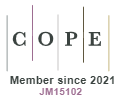Evaluating the Security of Electronic Banking in Users Opinion and Analyzing the Behavior of Banks in the Event of a Security Incident
DOI:
https://doi.org/10.18778/2391-6478.S2.2022.04Keywords:
electronic banking, e-banking, security, cyber-security, banking fraudAbstract
The purpose of this article. The aim of the article is to identify the opinions of bank customers on the level of security of electronic banking in Poland and to analyze the actions taken by banks in the event of a security incident.
Methodology. The analysis was based on data collected through a questionnaire survey. The survey with non-random sampling involved 222 people, and 217 records were included in the analysis. The form contained closed questions.
The result of the research. The analysis of the survey results indicates a high sense of security among bank account users, especially thanks to campaigns initiated by banks that inform customers about possible dangers. Respondents value direct communication and quick responses, which in this age of technological advances are the most important element in protecting customers. The literature review, which complements the survey, also confirms the high commitment of banking institutions in ensuring security. Despite the analysis of the survey results, it is important to bear in mind the lack of their translation to the general population, which does not allow a clear confirmation of the total security of customers holding funds in bank accounts.
Downloads
References
Alansari, Y. i Al-Sartawi, A.M.M. (2021). IT governance and E-banking in GCC listed banks. Procedia Computer Science, 183. https://doi.org/10.1016/j.procs.2021.03.008
Google Scholar
DOI: https://doi.org/10.1016/j.procs.2021.03.008
Al-Gharaibah, O.B. (2020). Predictors of E-banking Service Adoption in Malaysia Using an Extended Technology Acceptance Model. Int. J. Contemp. Manag. Inf. Technol, 1(1).
Google Scholar
Alkahtani, H., Aldhyani, T.H. i Al-Yaari, M. (2020). Adaptive anomaly detection framework model objects in cyberspace. Applied Bionics and Biomechanics, 1–2. https://doi.org/10.1155/2020/6660489
Google Scholar
DOI: https://doi.org/10.1155/2020/6660489
Andriesse, D. i Bos, H. (2014). An Analysis of the Zeus Peer-to-Peer Protocol. Technical Report IR-CS-74.
Google Scholar
Brakoniecki, M., Olczak, M. i Uryniuk, J. (2015). Bezpieczeństwo bankowości elektronicznej. II Raport Specjalny. https://obserwatorium.biz/wp-content/uploads/2018/11/2_PL.pdf [dostęp 15.11.2021].
Google Scholar
Buil-Gil, D. i Zeng, Y. (2021). Meeting you was a fake: investigating the increase in romance fraud during COVID-19. Journal of Financial Crime. https://doi.org/10.1108/JFC-02-2021-0042
Google Scholar
DOI: https://doi.org/10.1108/JFC-02-2021-0042
Freij, Å. (2020). Using technology to support financial services regulatory compliance: current applications and future prospects of regtech. Journal of Investment Compliance, 21(2/3). https://doi.org/10.1108/joic-10-2020-0033
Google Scholar
DOI: https://doi.org/10.1108/JOIC-10-2020-0033
Hałasik-Kozajda, M. i Olbryś, M. (2021). Skutki implementacji dyrektywy o usługach płatniczych (PSD2). Bank i Kredyt, 52(3).
Google Scholar
Hapuarachchi, C. i Samarakoon, A. (2020). Drivers Affecting Online Banking Usage of Private Commercial Banks in Sri Lanka. Asian Journal of Economics, Business and Accounting, 20(1).
Google Scholar
DOI: https://doi.org/10.9734/ajeba/2020/v20i130314
Jibril, A.B., Kwarteng, M., Chovancova i M., Denanyoh, R. (2020), Customers’ Perception of Cybersecurity Threats Toward e-Banking Adoption and Retention: A Conceptual Study,15th International Conference on Cyber Warfare and Security, 275.
Google Scholar
Kosiński, B., Nowak, A., Karkowska, R. i Winkler-Drews, T. (2017). Podstawy Współczesnej Bankowości. Warszawa: Polskie Wydawnictwo Ekonomiczne.
Google Scholar
Krzysztoszek, M. (2017). Bankowość elektroniczna w teorii i praktyce. Warszawa: Komisja Nadzoru Finansowego.
Google Scholar
Le Nguyen, C. (2018). Preventing the use of financial institutions for money laundering and the implications for financial privacy. Journal of Money Laundering Control, 21(1).
Google Scholar
DOI: https://doi.org/10.1108/JMLC-01-2017-0004
Lenka, S.K. i Barik, R. (2018). Has expansion of mobile phone and internet use spurred financial inclusion in the SAARC countries? Financial Innovation, 4(5). https://doi.org/10.1186/s40854-018-0089-x
Google Scholar
DOI: https://doi.org/10.1186/s40854-018-0089-x
Li, F., Lu, H., Hou, M., Cui i K., Darbandi, M. (2021). Customer satisfaction with bank services: The role of cloud services, security, e-learning and service quality. Technology in Society, 64. https://doi.org/10.1016/j.techsoc.2020.101487
Google Scholar
DOI: https://doi.org/10.1016/j.techsoc.2020.101487
Lisowska, A. i Waściński, T. (2021). Bezpieczeństwo bankowości internetowej i mobilnej na rynku finansowym. Systemy Logistyczne Wojsk, 54. https://doi.org/10.37055/slw/140380
Google Scholar
DOI: https://doi.org/10.37055/slw/140380
Liyanaarachchi, G., Deshpande, S. i Weaven, S. (2021). Online banking and privacy: redesigning sales strategy through social exchange. International Journal of Bank Marketing, 39(6). https://doi.org/10.1108/IJBM-05-2020-0278
Google Scholar
DOI: https://doi.org/10.1108/IJBM-05-2020-0278
Melnychenko, S., Volosovych, S. i Baraniuk, Y. (2020). Dominant ideas of financial technologies in digital banking. Baltic Journal of Economic Studies, 6(1). https://doi.org/10.30525/2256-0742/2020-6-1-92-99
Google Scholar
DOI: https://doi.org/10.30525/2256-0742/2020-6-1-92-99
Morake, A., Khoza, L.T. i Bokaba T. (2021). Biometric technology in banking institutions: ‘The customers’ perspectives’. SA Journal of Information Management, 23(1). https://doi.org/10.4102/sajim.v23i1.1407
Google Scholar
DOI: https://doi.org/10.4102/sajim.v23i1.1407
Moşteanu, D., Roxana, N., Faccia, D., Cavaliere, L.P.L. i Bhatia, S. (2020). Digital technologies’ implementation within financial and banking system during socio distancing restrictions – back to the future. International Journal of Advanced Research in Engineering and Technology, 11(6).
Google Scholar
Nosowski, A. (2005). Geneza bankowości elektronicznej. W: A. Gospodarowicz, red., Bankowość elektroniczna. Warszawa: PWE.
Google Scholar
Omariba, Z.B., Masese, N.B. i Wanyembi, G. (2012). Security and privacy of electronic banking. International Journal of Computer Science Issues (IJCSI), 9(4).
Google Scholar
Rossow, C. (2013). Using Malware Analysis to Evaluate Botnet Resilience. PhD Thesis, Amsterdam: Vrije Universiteit.
Google Scholar
Sikorski, M. i Honing, A. (2012). Practical malware analysis. The hands-on guide to dissecting malicious software. San Francisco: No starch press.
Google Scholar
Tam, C. i Oliveira, T. (2017). Literature review of mobile banking and individual performance. International Journal of Bank Marketing, 35(7). https://doi.org/10.1108/IJBM-09-2015-0143
Google Scholar
DOI: https://doi.org/10.1108/IJBM-09-2015-0143
(www1) https://cert.pl/raporty-roczne/ [dostęp 3.11.2022].
Google Scholar
(www2) https://prnews.pl/wp-content/uploads/2020/12/polska_bankowosc_w_liczbach_IIIq2020.pdf [dostęp 25.11.2021].
Google Scholar
[www3] https://www.zbp.pl/raporty-i-publikacje/raporty-cykliczne/raport-netbank [dostęp 13.01.2022].
Google Scholar
[www4] https://rf.gov.pl/2020/07/30/rachunek-podstawowy-darmowe-rozwiazanie [dostęp 03.12.2021].
Google Scholar
Związek Banków Polskich (2018). Cyberbezpieczny portfel. Warszawa.
Google Scholar
Dyrektywa 95/46/WE (ogólne rozporządzenie o ochronie danych) (Dz.U. UE. L. z 2016 r. nr 119, str. 1 z późn. zm.).
Google Scholar
Dyrektywa Parlamentu Europejskiego i Rady (UE) 2015/2366 z dnia 25 listopada 2015 r. w sprawie usług płatniczych w ramach rynku wewnętrznego.
Google Scholar
Dyrektywa Parlamentu Europejskiego i Rady (UE) 2016/97 z dnia 20 stycznia 2016 r. w sprawie dystrybucji ubezpieczeń (wersja przekształcona) (Dz.U. UE. L. z 2016 r. nr 26, str. 19 z późn. zm.).
Google Scholar
Rekomendacja D Komisji Nadzoru Finansowego dotycząca zarządzania obszarami technologii informacyjnej i bezpieczeństwa środowiska teleinformatycznego w bankach (2013), https://www.knf.gov.pl/knf/pl/komponenty/img/Rekomendacja_D_8_01_13_uchwala_7_33016.pdf [dostęp 11.11.2021].
Google Scholar
Rozporządzenie Parlamentu Europejskiego i Rady (UE) 2016/679 z dnia 27 kwietnia 2016 r. w sprawie ochrony osób fizycznych w związku z przetwarzaniem danych osobowych i w sprawie swobodnego przepływu takich danych.
Google Scholar
Uchwała Komisji Nadzoru Bankowego z dnia 11 grudnia 2002 r. w sprawie wydania Rekomendacji D dotyczącej zarządzania ryzykami towarzyszącymi systemom informatycznym i telekomunikacyjnym używanym przez banki.
Google Scholar
Uchwała Nr 7/2013 Komisji Nadzoru Finansowego z dnia 8 stycznia 2013 r. w sprawie wydania Rekomendacji D dotyczącej zarządzania obszarami technologii informacyjnej i bezpieczeństwa środowiska teleinformatycznego w bankach (Dz.Urz. KNF z 2013 r. poz. 5).
Google Scholar
Ustawa z dnia 19 sierpnia 2011 r. o usługach płatniczych (t.j. Dz.U. 2021, poz. 1907 z późn. zm.).
Google Scholar
Ustawa z dnia 29 sierpnia 1997 r. Prawo bankowe (t.j. Dz.U. 2021, poz. 2439 z późn. zm.).
Google Scholar
Downloads
Published
How to Cite
Issue
Section
License

This work is licensed under a Creative Commons Attribution-NonCommercial-NoDerivatives 4.0 International License.














